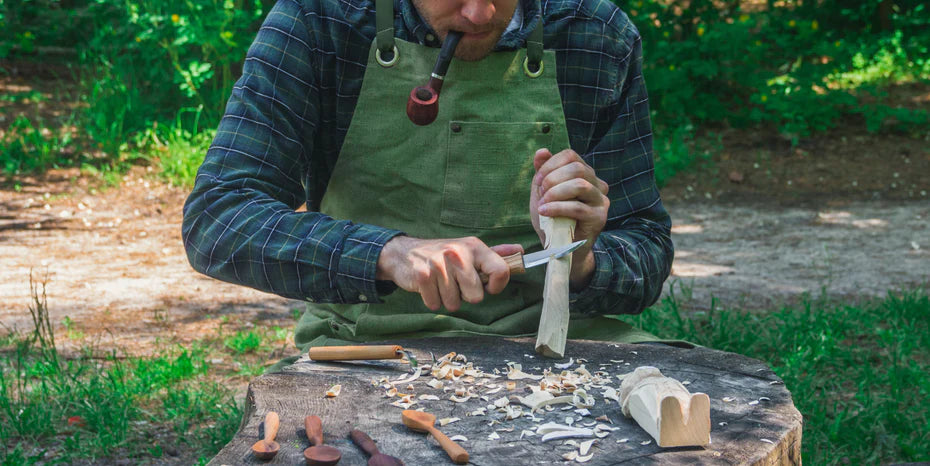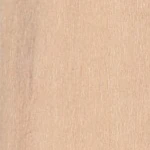What Is the Softest Wood for Carving?
Wood carving is an art that requires skill, creativity, and the right wooden materials. One of the most critical factors in wood carving is choosing the best type of wood. Softwood types are popular for many carvers, as they are easy to carve and have a smooth texture. But what is soft wood, and what is the softest wood to carve, you ask? This article will reveal the world of soft carving wood and help you find the perfect wood for your carving needs.

Why the Softness of Wood Matters in Carving?
The softness of wood matters in carving because it affects the ease and speed of the carving process. Soft wood is easier to cut and shape, making it great for more intricate and detailed carvings. It also tends to have a smoother texture, which can enhance the final project's appearance.
The Characteristics That Make a Wood Good
A good carving wood should be lightweight, soft, and have a consistent grain pattern for smooth carving. The texture of the wood should be smooth, allowing for intricate details. Color is another factor to consider, as it can enhance the overall appearance of the carving.

Exploring the Different Types of Soft Woods
There are many types of softwood available for carving; each has its unique characteristics and benefits. Here are some of the most popular types for carving:

Cottonwood
A type of poplar, cottonwood is another popular choice for carving. It has a light color and straight grain and is easy to work with. It is known for its lightweight and softness, perfect for carving detailed projects.

Balsa Wood
It is one of the lightest and softest types of soft wood. It is popular among hobbyists and beginner carvers due to its ease of use and versatility. However, its low density makes it less durable than other woods

Aspen
Its pale color and straight grain make it a relatively soft, easy-to-carve wood. Its uniform texture makes it ideal for smooth surfaces and fine details.

Butternut (White Walnut)
A medium-density type of wood, butternut is soft and easy to carve wood. It has a light brown color, and a straight, fine grain, making it ideal for carving intricate designs.

Cedar
Cedar is a lightweight soft wood with a distinct aroma and reddish color. It has a straight grain and is relatively easy to carve wood, making it a popular choice for carving.

Basswood
Considered the gold standard of soft carving wood, basswood is an excellent choice for beginners. It has a fine and uniform texture, ideal for intricate carving designs. Discover the truth about the question «Is Basswood Hard to Carve?» through our captivating article available for reading.

White Pine
It is a soft, light-colored wood that's easy to carve. It has a straight grain and a relatively uniform texture, perfect for creating smooth surfaces.

Cherry
While not as soft as some other woods on this list, Cherry is still relatively easy to carve wood. It has a reddish-brown color and a fine, straight grain, ideal for carving fine details.

Black Walnut
It is a medium-density type of wood with a rich, dark color and a straight grain. While it's not as soft as some other woods here, it's still easy to work with and is known for its durability. Eager to explore its carving characteristics? Immerse yourself in our enlightening article, «Is Walnut Wood Hard to Carve?».

Birch
Known for its light-colored, fine-grained wood, birch is relatively easy to carve. It's not as soft but still a good choice for carving projects with fine details.

Lime
Also known as basswood in Europe, lime is a light-colored, even-textured wood that's easy to carve. It has a uniform texture and minimal grain, making it ideal for creating smooth surfaces and fine details.
Pros and Cons of Carving with Soft Woods

Carving with soft wood has pros and cons, like anything in life.
Pros:
- Easier to carve/manipulate with carving tools.
- Holds fine details well, making them an excellent choice for intricate designs.
- More affordable, cost-effective option for beginners or those on a budget.
Cons:
- Less durable, meaning they may not withstand wear and tear.
- Have limited application (may not be suitable for all carvings, such as furniture or outdoor sculptures).
Tips for Choosing and Preparing
When choosing soft wood for carving, look for a piece that is straight and free of knots. It should also be the right size to match your project. Before carving, prepare the wood by removing any bark or debris and smoothing the surface.

Which Tools You Need for Carving Soft Woods?
To carve soft wood, you'll need a few essential tools, such as:
- A carving knife for shaping and cutting wood.
- A spoon carving knife for scooping out the bowl of your spoon.
- A chisel for removing larger pieces of wood.
- A gouge for creating concave shapes.
- A V-shaped tool for creating crisp, clean lines.
Of course, you can add more wood carving tools to your toolkit, but it’s better to do as your experience grows. Be sure to check out BeaverCraft's detailed guide «Wood Carving Tools Your Toolkit Should Have».

How To Soften Wood for Carving?
Sometimes, even softest woods can be tough to carve if they're particularly dense or hard. To soften the wood, you can soak it in water for several hours or overnight. It will make the wood more pliable and easier to carve. Just dry the wood thoroughly before you start carving, as excess moisture can cause the wood to warp.
How to Avoid Mistakes When Carving with Soft Woods?
Carving with softwood types can be a delightfully therapeutic activity, but it can quickly turn into a nightmare if you make some common mistakes. To help you avoid any potential disasters, here are some tips to keep in mind when working with soft wood:
- Don't rush: Take your time and plan your cuts carefully. It's important to be patient and avoid aggressive carving techniques.
- Use sharp tools: Dull tools can make carving more difficult and can even lead to accidents. Before starting your project, you'll want to ensure your tools are in their best condition.
- Mind the grain: Carve in the direction of the grain to minimize tear-out and ensure a smooth finish.

The softness of the wood is a crucial factor to consider when choosing a wood for carving. Softwood types can make the carving process easier and more enjoyable, so choosing the right type of wood and preparing it properly for the best results is essential.



4 Comments
Hi Nihat! That’s a great hobby to start — wood carving is incredibly rewarding 🙂
For beginners, it’s best to start with soft woods like basswood (also known as linden) — it’s easy to carve and very beginner-friendly.
You can find carving wood on our website – we have ready-to-use blanks and blocks.
If you need help getting started, we’re always here to support you!
Thank you so much for your kind words! It’s amazing that you’re a painter, sculptor, and illustrator—such talent! For carving birds and animals, a softwood like basswood or butternut would be perfect. These woods are easy to work with and carve beautifully. You can typically find them at specialized woodworking stores or online. We’d recommend looking for suppliers that offer carving wood or even specific kits for beginners. Best of luck with your projects—we are sure you’ll create something beautiful!
Gostaria de saber onde encontrar e adquirir esse material.